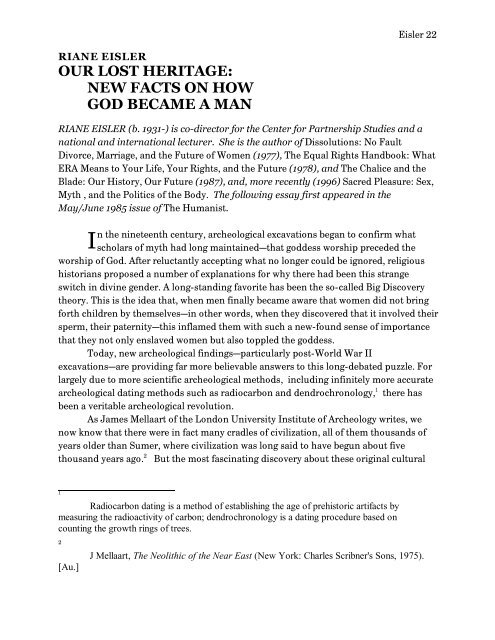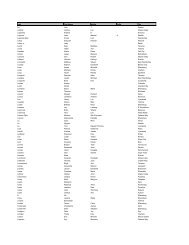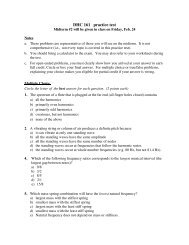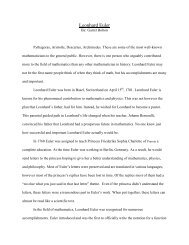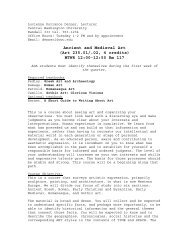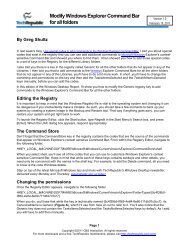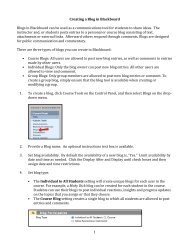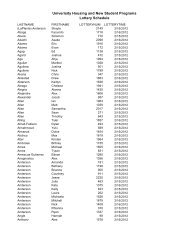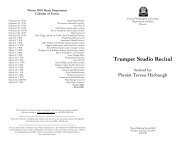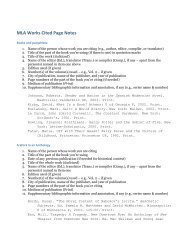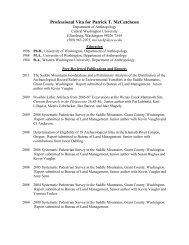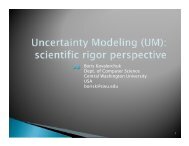THE COURAGE OF TURTLES - Central Washington University
THE COURAGE OF TURTLES - Central Washington University
THE COURAGE OF TURTLES - Central Washington University
Create successful ePaper yourself
Turn your PDF publications into a flip-book with our unique Google optimized e-Paper software.
Eisler 22<br />
RIANE EISLER<br />
OUR LOST HERITAGE:<br />
NEW FACTS ON HOW<br />
GOD BECAME A MAN<br />
RIANE EISLER (b. 1931-) is co-director for the Center for Partnership Studies and a<br />
national and international lecturer. She is the author of Dissolutions: No Fault<br />
Divorce, Marriage, and the Future of Women (1977), The Equal Rights Handbook: What<br />
ERA Means to Your Life, Your Rights, and the Future (1978), and The Chalice and the<br />
Blade: Our History, Our Future (1987), and, more recently (1996) Sacred Pleasure: Sex,<br />
Myth , and the Politics of the Body. The following essay first appeared in the<br />
May/June 1985 issue of The Humanist.<br />
n the nineteenth century, archeological excavations began to confirm what<br />
Ischolars of myth had long maintainedCthat goddess worship preceded the<br />
worship of God. After reluctantly accepting what no longer could be ignored, religious<br />
historians proposed a number of explanations for why there had been this strange<br />
switch in divine gender. A long-standing favorite has been the so-called Big Discovery<br />
theory. This is the idea that, when men finally became aware that women did not bring<br />
forth children by themselvesCin other words, when they discovered that it involved their<br />
sperm, their paternityCthis inflamed them with such a new-found sense of importance<br />
that they not only enslaved women but also toppled the goddess.<br />
Today, new archeological findingsCparticularly post-World War II<br />
excavationsCare providing far more believable answers to this long-debated puzzle. For<br />
largely due to more scientific archeological methods, including infinitely more accurate<br />
1<br />
archeological dating methods such as radiocarbon and dendrochronology, there has<br />
been a veritable archeological revolution.<br />
As James Mellaart of the London <strong>University</strong> Institute of Archeology writes, we<br />
now know that there were in fact many cradles of civilization, all of them thousands of<br />
years older than Sumer, where civilization was long said to have begun about five<br />
2<br />
thousand years ago. But the most fascinating discovery about these original cultural<br />
1<br />
Radiocarbon dating is a method of establishing the age of prehistoric artifacts by<br />
measuring the radioactivity of carbon; dendrochronology is a dating procedure based on<br />
counting the growth rings of trees.<br />
2<br />
[Au.]<br />
J Mellaart, The Neolithic of the Near East (New York: Charles Scribner's Sons, 1975).


